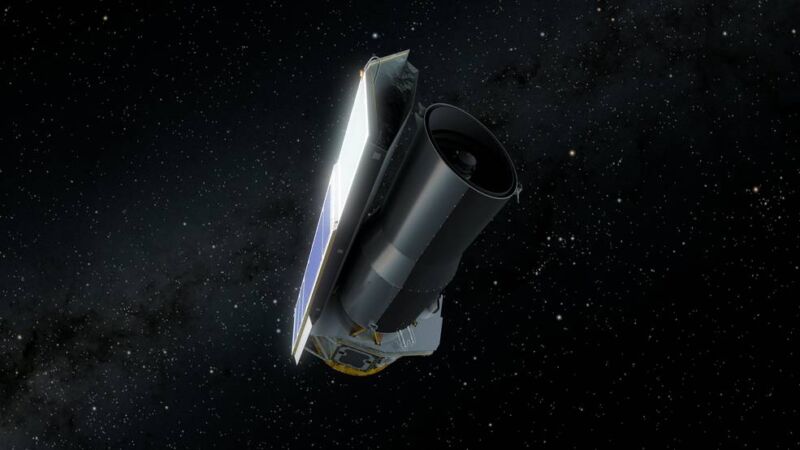
Enlarge / An artist's conception of NASA’s Spitzer Space Telescope in deep space. (credit: NASA/JPL-Caltech)
A Delta II rocket launched the Spitzer Space Telescope two decades ago, boosting it to an Earth-trailing orbit, where it drifted away from our planet at a rate of about 15 million kilometers a year. It was the last of NASA's four "Great Observatories" put into space from 1990 to 2003.
Over its planned five-year lifetime, the infrared space telescope performed its job well, helping astronomers discover newly forming stars, observe exoplanets, and study galaxies. After more than seven years, as anticipated by scientists, the on-board supply of liquid helium ran out. Without this coolant, some of Spitzer's scientific instruments were unavailable. So its operators switched to "warm mission" mode, taking data from two of its shortwave channels.
The space telescope continued operating until about three years ago, at which point the spacecraft began to overheat whenever it needed to point back toward Earth for communications. By this time, as it drifted farther from Earth, it was close to being on the opposite side of the Sun. This meant that operating the telescope, and having it phone home from time to time, would irreparably damage Spitzer's remaining scientific instruments.
No comments:
Post a Comment